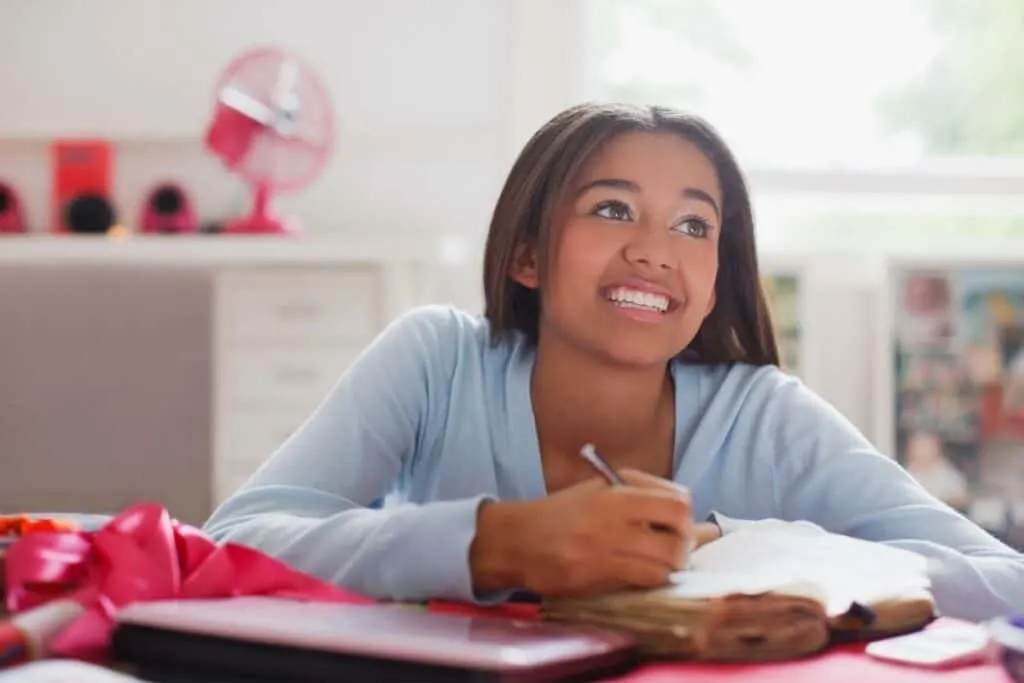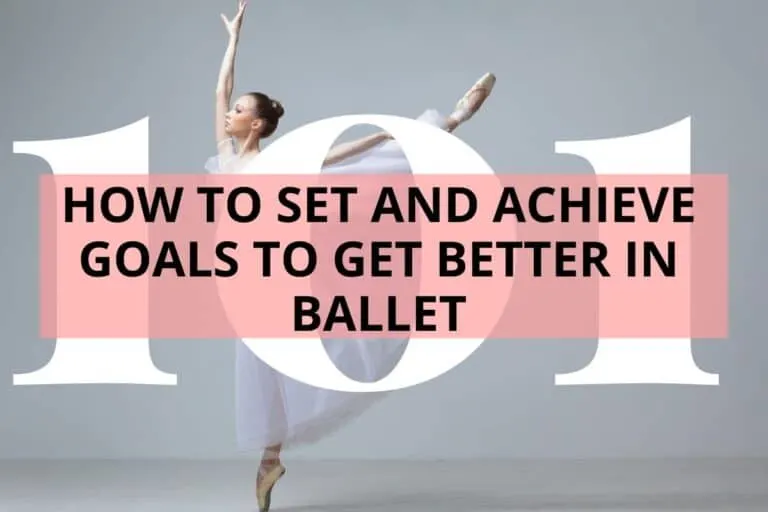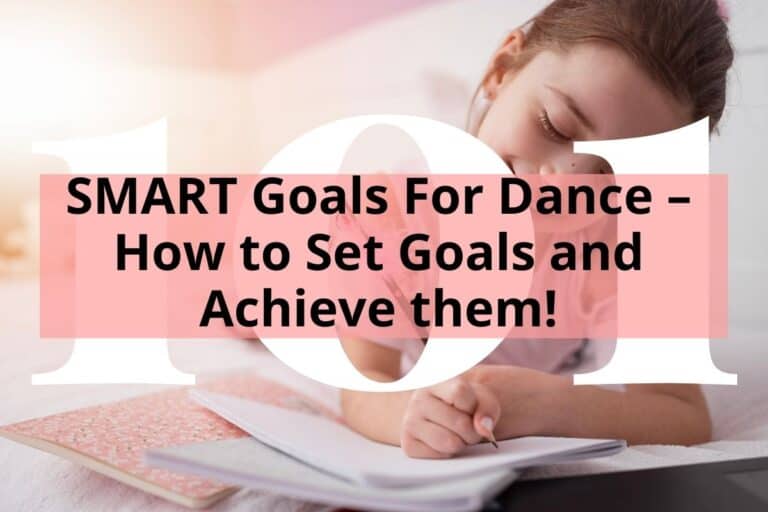The ability to self-reflect and acknowledge strengths and weaknesses is an important skill for dancers. Self-reflection is a highly transferable skill that people with dance backgrounds can apply in their other pursuits. Just like dance techniques, self-reflection takes practice and is a continuous process.
Self-reflection in dance is crucial for learning. Self-reflection is the practice of assessing one’s own work and ways of working; the dance classroom is a great place to practice this skill. Teachers guide students in the process until they build the habit of reflecting and self-correcting independently.

Building skills in self-reflection is probably NOT one of the first things a parent thinks about when choosing dance as an activity for their child, but skills in self-reflection help dancers grow on the dance floor and beyond. Read on for what teachers and parents can do to maximize their students’ growth.
What is self-reflection in dance?
Self-reflection in dance is the same as it is in any other context- an opportunity to assess one’s own performance and determine an action plan for further growth. Dance is uniquely situated in a conversation about self-reflection because feedback can be almost instant, or it can be over a longer time. For example, it can be immediately after performing an exercise, “What went well during that run through? What do I want to focus on during my next go?” Or after a whole class, “Which exercise was my most successful?” “Which did I think I could have done better at?” “What is one thing I did today better than I did it last time?” Beginner students might be offered these prompts by their teacher, but as students advance, they develop the habit of assessing their work and self-correcting.
Why is reflection important in dance?
Reflection is a crucial element in the learning process. Metacognition, “thinking about thinking” helps people to deeply learn, rather than acquire surface-level knowledge. The act of stopping and thinking about what you’ve just seen or the dancing you just did helps to deepen understanding and synthesize information. Opportunities to reflect after improvising are especially important, as they help connect the mind’s understanding to the body’s physical experience.
Self-reflection also helps a dancer learn how they learn best. Do they need to sing the names of the steps to remember the sequence? Do they want counts or scats? Do they need to watch without moving before doing anything? These preferences are different for individuals and the only way anyone will really figure out their learning preferences is to take some time to think about them.
Reflection versus judgment
Reflective practice that helps students to deepen their understanding of themselves and the content that they are studying could easily be misconstrued for judgment. When working on the nuance of a dance skill, that might even be necessary, either the step was correct, or it wasn’t. However, it is also important that students develop the capacity to simply notice, observe, and describe, without attaching a value judgment. This can be trickier than you would think. When asking my former elementary school students to begin their statements with “I saw__,” it was very hard for them not to start their statement with “I liked__.” While their support for their classmates was great and I wanted them to understand their own preferences, it is a useful skill to simply witness.
Tools that help self-reflection
Video
Video can be a great tool for dancers. Dancers must learn to dance based on how their movement feels as much as how it looks, so it is important students do not rely too much on the mirror. (Some studios cover the mirrors or have done away with them altogether). Videos of one’s performance offer dancers the opportunity to see what their work looks like, and often offer the opportunity for ‘aha moments.’ It is much easier to understand that your leg isn’t straight or you are a beat late when you see it on video than when you are just given a note from a teacher. The fact that many of us walk around with video cameras in our pockets makes it easier to use this kind of feedback.
Journal

Keeping a journal is a great way for dancers to measure their progress over time. Students in K-12 settings might reflect in a journal after each curricular unit, while studio students might reflect weekly, monthly, or on a semester basis. One might journal their observations of their video-recorded performance. A journal is a great way to record goals and reflect on one’s progress towards meeting them, record small victories, or note corrections received. A journal helps a dancer notice patterns in their thinking and their growth.
Some Good Journal Prompts:
- List the skills you performed confidently
- List the skills you feel you need to improve on. What are some ways you think you can improve?
- What is your favorite part of the class? Why?
- What part of the class is most challenging for you? What do you say in your head to help get through?
- Write a “warm fuzzy” (complimentary letter) to someone in class. (It is important to cheer each other on, and watching other people carefully can deepen understanding too!)
- What is one way you’ve grown since the start of this (unit/month/semester)?
- What would help you to feel more confident as a dancer?
- What questions do you have for your teacher?
- What ways of learning help you the most?
- How do you see your intention reflected in your choreography? What are some ways you could make it clearer?
- If you were the teacher, what would you want your students to know?
For a great selection of dance-themed journals check out our resource page here!
Teachers
Simply asking dancers, “Are you ready to move on, or do we need to do it again?” encourages them to reflect on their understanding of choreography or a task. Hillary Pond, an NYC Middle School Dance Educator, said that she finds simple strategies to be the most effective. She spoke of a “Glow and Grow,” where students share one thing they did well and one area where they would like to improve, sometimes talking to a partner, and sometimes writing it on a post-it. (Post-its might get added to a journal over time, as a portfolio of sorts). Pond emphasized the importance of encouraging her students to identify areas of strength, “It really undermines your confidence if you don’t acknowledge what you do well…you need to know what you do well so you can do it again!”
Parents
The simple question, “What was your favorite part of dance class today?” and the important follow-up, “Why?” is an easy way to encourage your dancer to think about their experience and highlight successes. Any of the journal prompts listed above are useful conversation starters for dancers who might not have highly developed writing skills.
Reflective practice to develop a growth mindset
The role a person’s Mindset plays in their performance has been the focus of psychologist Carol Dweck’s research. She has found that people possess either a fixed mindset, “I am how I am and cannot change,” or a growth mindset, “I can always do better if I work at it.” The growth mindset relies on a practice of self-reflection and can be cultivated from an early age. Sesame Street has even done work on this concept, with its song, The Power of Yet, the word “yet,” being a key component to a growth mindset. Pointe Magazine offers some insights about a growth mindset specifically for dancers here.
Be Aware of Potential Pitfalls
While building the capacity to honestly assess one’s own work is important, it is also important that students do not become overwhelmed by this practice. Many details might go through a dancer’s mind when performing an exercise or a piece, but at a certain point, the dancer just has to connect to the music and dance. Overthinking can damage performance just as much as not thinking enough!
Many dancers tend to have perfectionist tendencies. They need to be taught, in reflective practice, how to reflect on their work in a way that is productive for them and to develop self-talk that is affirming, even when discussing their own perceived flaws.
The Benefits of Peer Reflection in dance

While ultimately we want dancers to be able to independently self-correct their technique, it takes time to learn to do that. As they say, “No man is an island,” and our classmates are our best resources. Learning is a social process and dance is no exception. Giving and receiving peer feedback, both in partnerships and larger groups can help dancers to grow their reflective skills. When carefully facilitated, both the observer and the performer benefit from this reciprocal process. Careful observations and discussions of another dancers’ work help a dancer to deepen their understanding of both dance technique and the choreographic process. Hearing feedback from a peer is different than hearing feedback from a teacher, and talking out loud about one’s work can help to crystalize a dancer’s thoughts and propel them forward with their next steps.
Reflections beyond the classroom
One of the many goals of Dance Education is to cultivate dance-loving audiences. The processes that dancers utilize to analyze and critique their own work can also be applied when dancers become audience members and view performances. I learned a simple protocol for this from a colleague a few years back. Three simple words: “See, think, wonder.” “See” refers to pure description, with no judgment or feeling attached, just observation, like: “I saw the dancers travel through general space and then freeze at a low level.” “Think” refers to connection making- what did that image remind you of, how did it make you feel? “Wonder” is for questions, “What would happen if they froze in connected shapes, how would that change the dance?” Engaging in these processes as an audience member will enrich a dancer’s dancing, as each experience we have broadens our own personal movement palettes. These strategies can also be applied to visual art pieces or a “hear, think, wonder” protocol for music.
Additional important goals of Dance Education are self-knowledge and a life-long love of learning. Building skills in self-reflection help to both help a dancer understand their strengths, weaknesses, and preferences, and to spark the curiosity to keep exploring.
In the words of Martha Graham, “No artist is pleased. There is no satisfaction whatever at any time. There is only a queer, divine dissatisfaction; a blessed unrest that keeps us marching and makes us more alive than the others.”
Check Out Our Google Web Story!
Further Reading
The following are a selection of articles that you might also be interested in reading!!!




